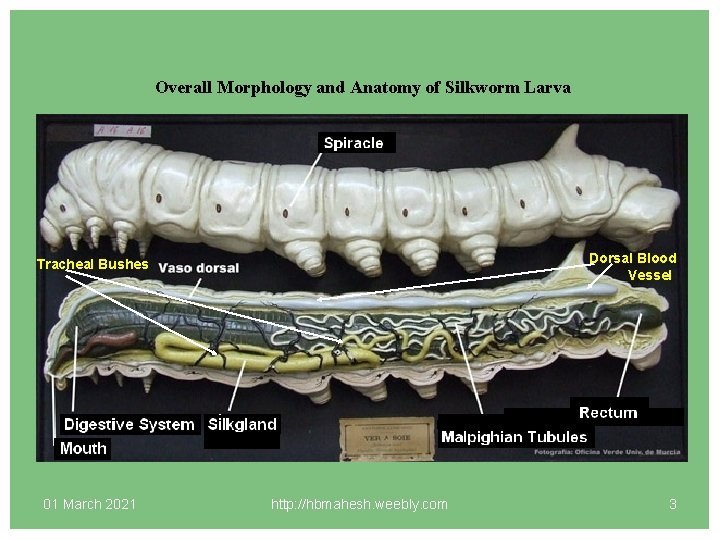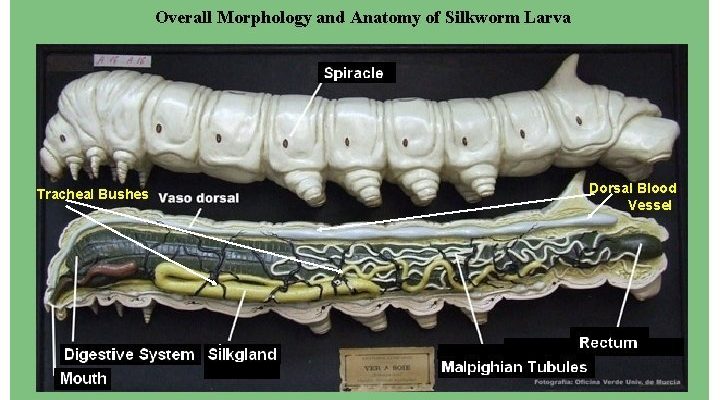
Silkworms, or *Bombyx mori*, are not just ordinary caterpillars; they are the larval stage of the silk moth. They play a vital role in the production of silk, a material we often take for granted. By exploring their anatomy, you’ll discover how these remarkable insects have adapted to their environment and carry out their life functions. Let’s dive into the silkworm’s anatomy and understand how each part contributes to its life cycle.
The Life Cycle of a Silkworm
The life cycle of a silkworm is a magical journey that consists of four key stages: egg, larva (caterpillar), pupa, and adult moth. Each stage brings unique changes.
- Egg: The life begins as tiny, shiny eggs laid by the female moth. They’re usually found on mulberry leaves, as this is the main food source for silkworms.
- Larva (Caterpillar): When the eggs hatch, the tiny caterpillars emerge, ready to munch on mulberry leaves. This is the stage when they grow rapidly and shed their skin several times, a process called molting.
- Pupa: After about four to six weeks of eating and growing, the caterpillars spin cocoons and enter the pupal stage. Inside the cocoon, they undergo a remarkable transformation.
- Adult Moth: Finally, the adult moth breaks out of the cocoon, ready to mate and start the cycle anew.
This life cycle can be likened to a well-choreographed dance, where each phase leads smoothly into the next. You might be thinking, “How does anatomy fit into all this?” Well, each life stage is supported by specific anatomical features that play crucial roles in survival.
The Anatomy of a Silkworm Caterpillar
Now, let’s zoom in on the silkworm caterpillar itself. This is the stage where they show off their unique anatomy. You might be surprised to learn that despite their small size, they have a fascinating structure designed for eating and growth.
One of the first things you’ll notice is their body structure. Silkworms have a soft, segmented body covered in tiny hairs. These segments are more than just pretty; they help the caterpillar move and flex as it crawls around. Think of it like a flexible train, where each car is linked but can still bend and twist.
Next, let’s talk about their mouthparts. Silkworms possess strong mandibles, which are perfect for munching through those leaves. They can eat about 20,000 times their weight in mulberry leaves during their life! The caterpillar’s digestive system is equally interesting—it’s designed to process all that leafy goodness efficiently.
Lastly, silkworms have simple eyes, called ocelli, which help them detect light and shadow. Here’s the thing: unlike more complex creatures, their vision isn’t sharp, but it’s enough for them to navigate their environment.
The Anatomy of a Silkworm Pupa
Once the caterpillar is ready to pupate, it spins a cocoon from silk threads. But what’s happening inside that cocoon? This stage is all about internal transformation, and the anatomy changes dramatically.
Inside the cocoon, the caterpillar’s body starts breaking down in a process called histolysis, where tissues break down into a kind of nutrient soup. This might sound gross, but it’s essential! The silkworm is essentially rebooting itself to become a moth.
During this transformation, some cells remain as is, while others develop into new structures. For example, the wings, legs, and reproductive organs start forming. Think of it as a high-tech factory where old parts are replaced with new ones, all while the factory keeps running smoothly.
You might wonder about their breathing system during this time. Silkworms have spiracles, tiny openings along their sides, that allow oxygen to enter. Even while they’re changing, they still need air!
The Anatomy of an Adult Moth
Once metamorphosis is complete, the adult silkworm emerges as a moth. This stage showcases the most significant anatomical changes. The moth has a completely different body structure compared to the caterpillar.
First off, adult moths have large, delicate wings covered in tiny scales. These scales are what give moths their beautiful patterns and colors. The wings are essential for flight, and they also play a role in attracting mates. Honestly, it’s like their own fashion statement in the insect world!
The mouthparts also change. Adult silkmoths have a long proboscis, which is perfect for sipping nectar from flowers. Unlike their caterpillar stage, they don’t eat much, focusing instead on reproducing and ensuring the next generation starts the cycle again.
Another intriguing feature is the adult’s antennae, which are feathery and sensitive. These help the moth detect scents in the air, guiding them to potential mates and food sources. You might be thinking, “That’s so cool!” And it truly is—a testament to how evolution shapes anatomy for survival.
The Role of Silk in Silkworm Anatomy
Silk is perhaps the most famous aspect of the silkworm’s life, and it’s worth exploring how this connects to their anatomy. Silkworms produce silk from specialized glands located in their head.
When spinning their cocoons, the caterpillars secrete a protein-rich liquid that hardens upon exposure to air, forming strong silk threads. This silk serves a dual purpose: it protects the pupa during its vulnerable transformation and is also harvested for human use.
The production of silk involves a complex process where the caterpillar can spin long, continuous threads up to a mile in length! Think of it as nature’s own fiber-producing factory. This remarkable ability not only helps the silkworm survive but has also led to the thriving silk industry that we see today.
You might be thinking about how this is relevant to humans. Well, silk has been prized for thousands of years for its luxurious feel and durability, making it a valuable resource across cultures. There’s a rich history tied to this simple little insect!
While we’ve covered a lot about the biology of silkworms, there are some common misconceptions that often pop up. Let’s clear those up!
First, many people think silkworms are harmful pests. In reality, they’re domesticated insects that have been bred for silk production. Unlike some caterpillars that can wreak havoc on gardens, silkworms are generally harmless and play a crucial role in the silk trade.
Another misconception is that all moths are nocturnal. While it’s true that most moths are night flyers, adult silkworms are somewhat unique in that they are primarily diurnal—active during the day. This helps them maximize their chances of finding mates.
Lastly, you might be wondering why some people avoid silk products. Much of the concern arises from ethical considerations about silkworm harvesting. Traditionally, silk is produced by boiling the cocoons with the pupae still inside. However, there are alternatives like peace silk, where the moths are allowed to emerge before the cocoons are harvested. It’s essential to be informed about these practices when choosing silk products.
From their humble beginnings as eggs to their transformation into beautiful moths, silkworms offer a mesmerising glimpse into the world of insects. Their anatomy is not just a study of physical traits; it reflects their lifestyle, survival strategies, and the intricate relationships they have with humans and the ecosystem.
Understanding silkworm anatomy gives us a greater appreciation for the silk we use and the role these creatures play in nature. Whether you’re a budding entomologist or just curious about the world around you, silkworms are a fantastic example of how life can unfold in unexpected and beautiful ways.
So next time you see something made of silk, take a moment to appreciate the amazing journey of the silkworm, the tiny creature that made it possible. Who knew that such a small insect could have such a grand story?

